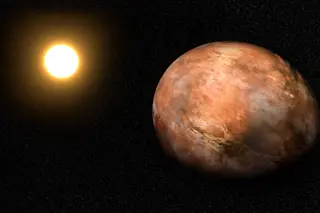To those who grew up in the long shadow of the Apollo program, the moon was a fixed goal in space. The triumphant Apollo 11 landing on July 20, 1969, set the stage for Wernher von Braun’s grand vision of the human conquest of space. Next would come a permanent moon base and a space station that together would serve as the jumping-off point to Mars. Three and a half years later, that dream faded as Eugene Cernan and Harrison Schmitt climbed into a frail-looking, foil-wrapped lunar module and blasted off the moon’s surface. No human has set foot there since. The Saturn V rocket became a museum piece, and NASA bet its money instead on a fleet of space shuttles circling in low Earth orbit.
"Had we pressed on with the Saturn V, we could have had a lunar base by 1975," says Paul Lowman, a geophysicist at NASA’s ...















